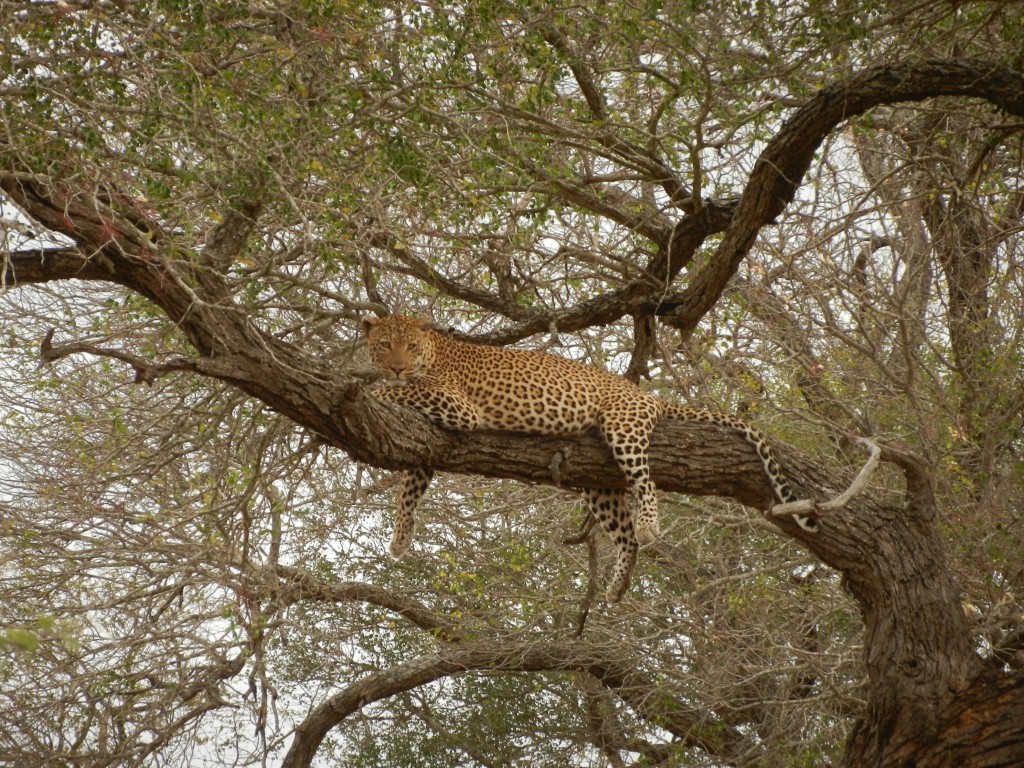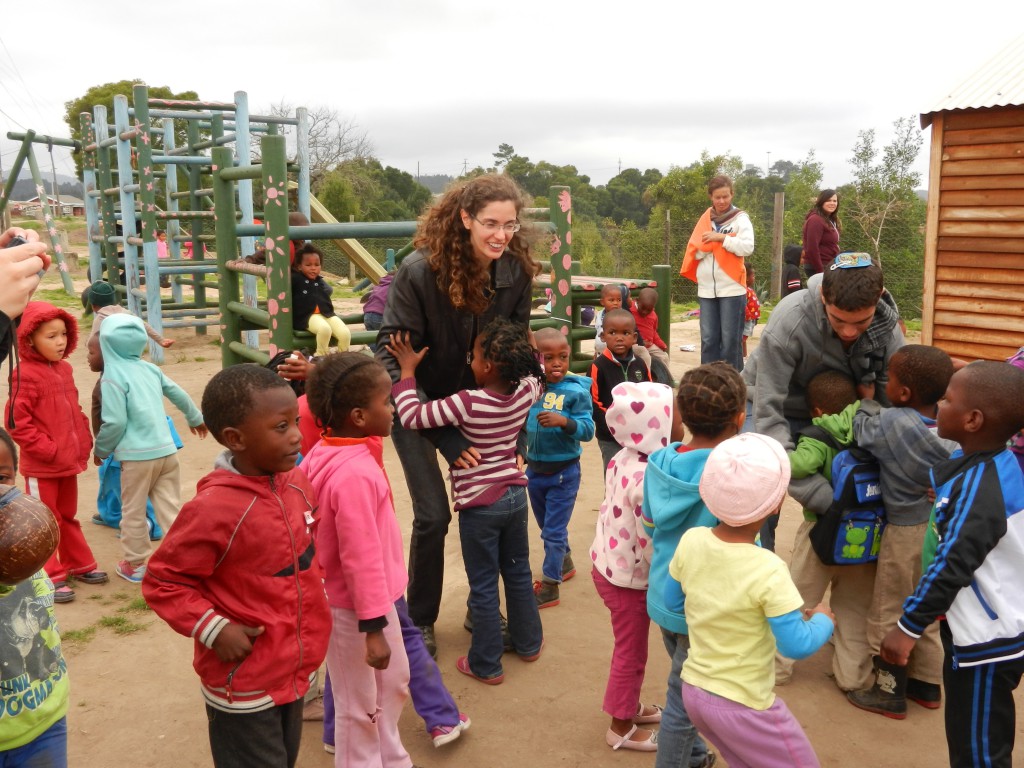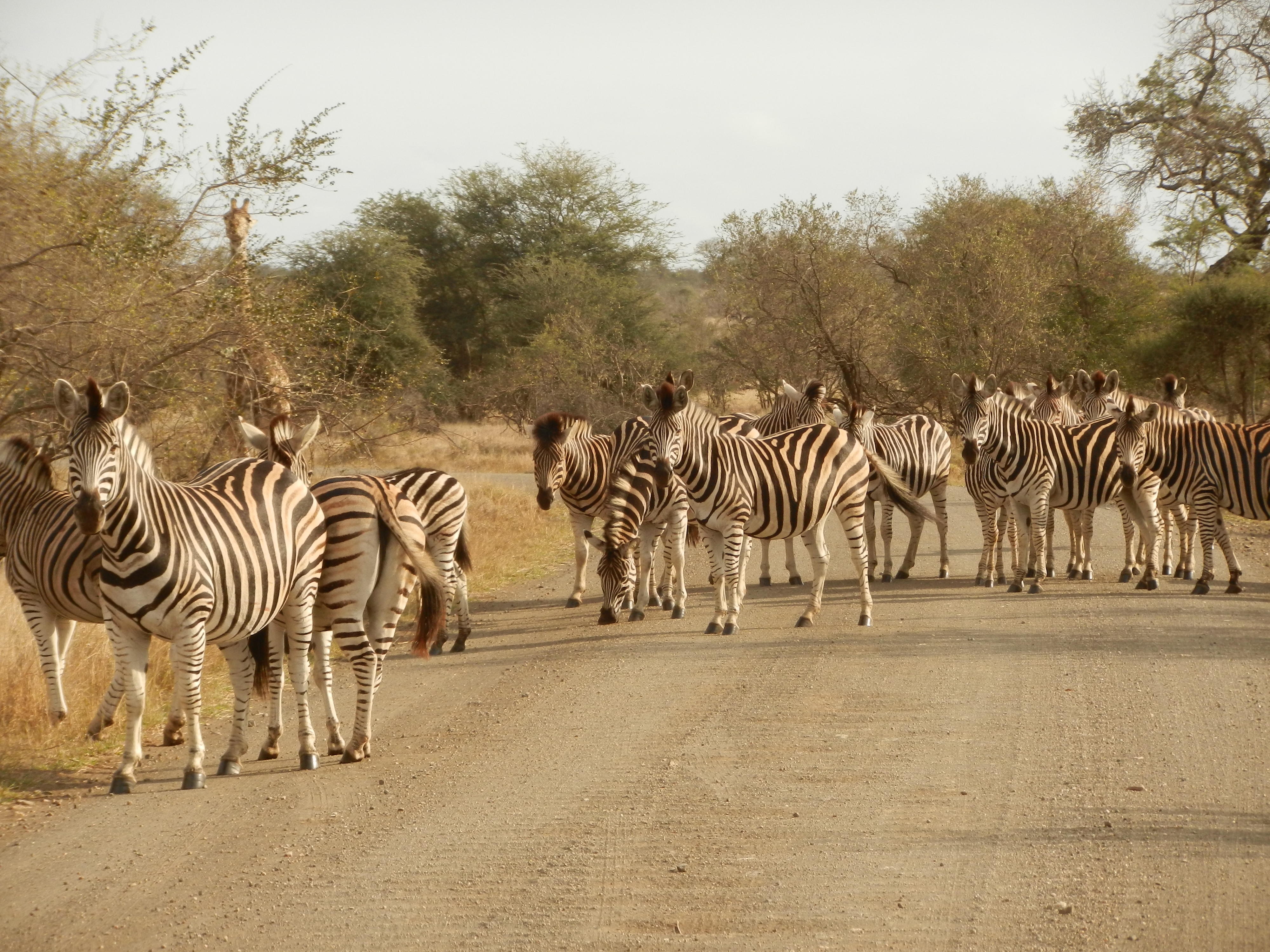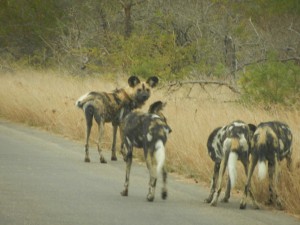Apologetics first. How this trip was possible is because my spouse travels a lot for work and gets frequent flyer miles. Also, once every seven years he gets a long vacation. Given that, we sometimes have enough free tickets and enough time to take the kids on a major trip. At this point, it’s not only the expense of traveling with four kids that is prohibitive, but it’s also difficult to find a time when everybody can come with. But we did it. We got some free tickets and all four kids joined us. We just came back from an amazing three weeks in South Africa.
Three weeks is barely enough enough to learn a little bit about this beautiful, huge and complicated country. We started off with Kruger National Park, which in itself is the size of Israel. We saw the most amazing animals from close-up. It’s like driving through a National Geografic program, only better. Sometimes you have to stop because a heard of zebras are walking in the road. Sometimes you have to drive away quickly, because a mommy elephant flaps her ears, indicating that you are too close to her 400 kg baby. The variety of wild-life, the vast space, the constant surprises are amazing. When you go on safari, you are supposed to look for the Big Five, i.e. elefant, buffalo, lion, leopard and rhino. 100,000 elegant, honey-colored impalas with tiny dark tails whipping back and forth, darting in and out between the trees, don’t count. Stripey zebras bobbing their heads in unison don’t count. Even the amazing giraffs, who look at you curiously with their long eye-lashes, don’t count. I, a Swedish city Jew from Israel, will not rest until I see a leopard. And we did. Our guide, who took us around on the first day, was talking on his cellphone, driving on a dirt road and showing me something in the bird-book when suddenly he stopped and backed up a few meters. “There”, he whispered, and pointed at an ajacent tree. On the lowest branch lay a beautiful leopard, fully  dressed in a spotted leopard fur-coat. The Swedish comedian Tage Danielsson once said “let the leopard wear the leopard”. That fur suited him perfectly. The leopard stared at us for a minute, but then decided to move on. With fluid movments it disappeared soundlessly in the tall grass. We also got lucky and saw some wild dogs. All morning we had been stopped by South African tourists inquiring if we had seen the rare band of dogs who were reportedly roaming. And in the end we did. For several minutes they walked next to our car, looking somewhat cartoonish and very dog-like.
dressed in a spotted leopard fur-coat. The Swedish comedian Tage Danielsson once said “let the leopard wear the leopard”. That fur suited him perfectly. The leopard stared at us for a minute, but then decided to move on. With fluid movments it disappeared soundlessly in the tall grass. We also got lucky and saw some wild dogs. All morning we had been stopped by South African tourists inquiring if we had seen the rare band of dogs who were reportedly roaming. And in the end we did. For several minutes they walked next to our car, looking somewhat cartoonish and very dog-like.
After Kruger we hit the Garden Route along the southern coast of South Africa. The scenery is amazing and you go from one natural wonder to the next. Every day I kept saying, this is probably the most beautiful place I’ve ever seen. Waterfals, snow-capped mountain tops, ravines and gorges, rolling hills. It is a very beautiful country. We saw a friend we met on the road do the world’s longest bungy jump. Well, the kids watched, I couldn’t see much from where I was hiding with my eyes closed behind a bush. The last few days we spent in Cape Town, wich has rightfully earned its place as one of the most beautiful cities in the world.
But more than the nature and animals of South Africa touched me, the people did. Driving out of the airport in Johannesburg upon our arrival we saw rows and rows of shacks on the other side of the high-way. It takes a moment till you understand that those are houses. Tiny houses, maybe 4 x 4 meters. No electricity, no indoor water or plumbing. Hundreds of shacks, packed tightly together, made of corrugated iron, woodens planks, plastic bags and cardboard. There is barely space between the shacks, only narrow paths.  The townships were built during apartheid, when blacks were not allowed to live in “white” areas. However, the blacks had to be housed nearby, so that they could get to work for the whites during daytime. Thus, next to every “white” city, blacks were allowed to create slums, some of these townships house more than half a million people. And that is how the majority of blacks still live in South Africa today, 20 years after the end of apartheid. Unemployment among young blacks is over 30%. Substance abuse and HIV are rampant with over 13% of the black population HIV positive. There are tens of thousands of HIV orphans in the townships. There is very limited public transportation, i.e. if you have a car, you can get from your township to your place of employment. If you have no car, you can walk. Driving after dark was challenging, not only because in South Africa you drive on the left, but also because there were always people walking in the dark on the edge of the highway. Often you see hitchhikers holding out money to show that they are willing to pay, just as long as they can get a ride. The government is trying to improve living-conditions in the townships. They build small and very basic, but permanent houses for those who fullfill the legal criteria for free housing. But life in the townships is hard. The bigger the city, the bigger the township and the more dangerous. Criminality in all townships is rife, and in many places the local gangs is the only form of structured leadership. Schooling in the townships is free, but bad, and a kid that goes to a township school has little chance of ever leaving. New child support laws seem to be making things worse. As our guide in the Knysna township, who lives there herself, said, “there are people who sit home and pop children, instead of getting a job”.
The townships were built during apartheid, when blacks were not allowed to live in “white” areas. However, the blacks had to be housed nearby, so that they could get to work for the whites during daytime. Thus, next to every “white” city, blacks were allowed to create slums, some of these townships house more than half a million people. And that is how the majority of blacks still live in South Africa today, 20 years after the end of apartheid. Unemployment among young blacks is over 30%. Substance abuse and HIV are rampant with over 13% of the black population HIV positive. There are tens of thousands of HIV orphans in the townships. There is very limited public transportation, i.e. if you have a car, you can get from your township to your place of employment. If you have no car, you can walk. Driving after dark was challenging, not only because in South Africa you drive on the left, but also because there were always people walking in the dark on the edge of the highway. Often you see hitchhikers holding out money to show that they are willing to pay, just as long as they can get a ride. The government is trying to improve living-conditions in the townships. They build small and very basic, but permanent houses for those who fullfill the legal criteria for free housing. But life in the townships is hard. The bigger the city, the bigger the township and the more dangerous. Criminality in all townships is rife, and in many places the local gangs is the only form of structured leadership. Schooling in the townships is free, but bad, and a kid that goes to a township school has little chance of ever leaving. New child support laws seem to be making things worse. As our guide in the Knysna township, who lives there herself, said, “there are people who sit home and pop children, instead of getting a job”.
Not everything is wrong. First of all, most South Africans we met, blacks and whites, were very friendly, curious and knowledgable. They have an amazing language-thing going, with most people speaking three or more languages and many speaking six or eight fluently. People we met loved to talk about languages and to demonstrate the clicking noices of the Xhosa and other tribes originating in the forests. South Africa has 11 official languages, the largest number of official languages any place in the world.
 Two other positive aspects impressed us particularly. One is the unifying force of belief. Through churches and a Christian outlook, South Africans of different colors seem to be able to build bridges and a sense of community beyond race. Almost everybody we met asked us about our religion. Their first association upon hearing that we’re from Israel was that of the Holy Land and the birthplace of Jesus. We felt that some found it hard to digest that we’re not Christians. An ideology based on respect for all of gods creations and a common belief system is the most visible path out of the chaos that South Africa seems to be in. The other positive force is the relatively peaceful way the Peace and Reconciliation Committes have worked and enabled the country to look at the past with open eyes, without allowing it to imprision blacks and whites in its iron-grip forever. Ella, our guide said, “I’ve suffered, but I forgive”. This is the legacy of Nelson Mandela, who didn’t shy away from looking at the terror and humiliation of Apartheid, but urged all his country-men to move on.
Two other positive aspects impressed us particularly. One is the unifying force of belief. Through churches and a Christian outlook, South Africans of different colors seem to be able to build bridges and a sense of community beyond race. Almost everybody we met asked us about our religion. Their first association upon hearing that we’re from Israel was that of the Holy Land and the birthplace of Jesus. We felt that some found it hard to digest that we’re not Christians. An ideology based on respect for all of gods creations and a common belief system is the most visible path out of the chaos that South Africa seems to be in. The other positive force is the relatively peaceful way the Peace and Reconciliation Committes have worked and enabled the country to look at the past with open eyes, without allowing it to imprision blacks and whites in its iron-grip forever. Ella, our guide said, “I’ve suffered, but I forgive”. This is the legacy of Nelson Mandela, who didn’t shy away from looking at the terror and humiliation of Apartheid, but urged all his country-men to move on.
And one last good thing. Africa is much darker than the West. The streets, and many houses, are poorly lit. People go to bed early, outside the big cities there is no night-life, partially because of fear of crime. So driving at night in South Africa is challenging, but the drivers are ever so nice. The roads are full of trucks moving goods across the continent. They drive carefully and well on the dark and winding roads but when you come up behind them they will sign with their rare lights when the road is clear for you to overtake. And they go out on the road margins to let you pass. If you do that for someone else, they’ll sign you a thank you with their lights. Beautiful. If only that sense of responsibility and initiative could be translated into other realms.
Noomi Stahl


